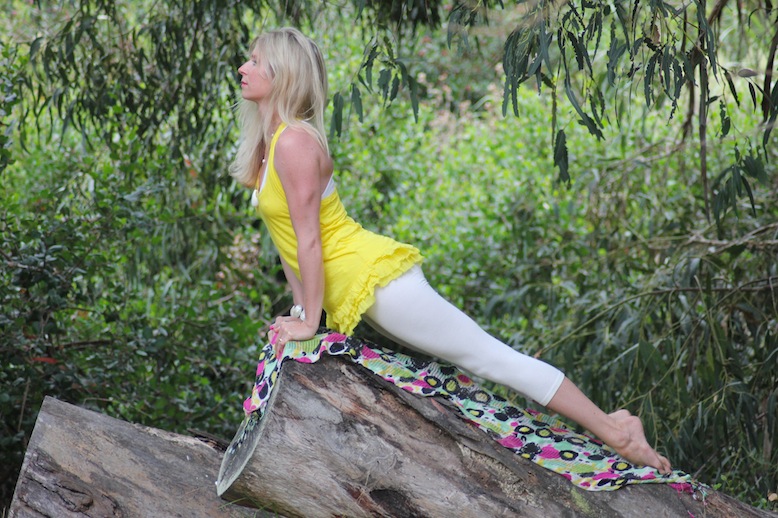One of the most important aspects of a superior vinyasa class is the ability of the teacher to create sequences with seamless transitions. When the journey from one to pose to the next is smooth, your students will feel as though they are gliding through space and defying the laws of gravity. Even though the class might be very challenging, if the transitions are seamless the experience of the class will be effortless.
A few tips for creating seamless transitions:
CREATE THE BREATH CONNECTION:
Begin class with an extremely simple flow to connect the students with their breath. The simpler the initial flow is, the easier it is to create a breath/movement connection. The possibilities for this are endless, but here are a few ideas:
Cat/cow
Move from all fours to childs pose (begin in child’s pose and inhale up to all fours, then exhale back to child’s pose…and so on).
Half sun-salutations
Series A
Repeat moving from plank to downdog several times
Repeat moving from down dog splits to tiger pose (exhale tiger pose/inhale downdog splits)
Simple series like the ones above and countless others create heat and connect the student with their breath. As you begin to introduce more difficult sequences, the breath connection has already been established and will carry into the next part of the class.
KEEP IT SIMPLE:
If you are newer to teaching, make sure to keep your flow sequences simple so that you are confident teaching them. The longer each side is and the more detours you take before moving to the other side, the harder it is to remember what you did. If you are teaching a sequence that is very complicated, there is a tendency to get lost in trying to remember what you did, and less focus on rhythm and pace. Keep things simple – then you can focus on creating a sense of effortlessness and fluidity.
CREATING FLUIDITY
Whether you are holding poses for one breath or several, creating seamless transitions depends heavily on the order in which you sequence postures. This is one of the many reasons why it’s important for teachers to have their own yoga practice. You need to know what feels right before you teach to others. Whether you have a personal practice or you’re attending classes, pay close attention to what feels smooth and seamless.
For example:
Try moving from Warrior 2 to Warrior 1. This feels awful, right? You have to change your feet around and moving from an external to internal hip rotation doesn’t feel very natural. Of course, this is only my opinion….but if you try it you will probably agree.
Try moving from Warrior 1 to Warrior 2. This feels better – more natural and not as “bumpy” of a transition. Now try moving from a high lunge to Warrior 2. Even better! Even though this is a somewhat advanced transition (I wouldn’t teach it to beginners), it can be done smoothly and seamlessly.
Draw from your own practice. Figure out what feels smoothe to YOU. Design a sequence of postures linked with the breath to create what feels like a dance that is effortless. Even though the body is working very hard, the practitioner is able to glide through the class with ease.
CONNECTION TO CORE
Incorporate postures that connect students to their abdominal muscles so that a connection to the core is established. Another key to seamless transition is finding a sense of lightness. The ultimate lift comes from moving from your center. Try to include some of the following poses to establish a connection to core from the beginning of class:
Navasana
Vashistasana
Tiger Pose (knee to chest)
Plank (also plank on forearms)
Lolasana/Tolasana
Jumping up to uttanasana, jumping back to chatturanga
The list is endless – use these or figure out your own way to connect your students to their center. To move from the center is to move with lightness and fluidity.
TRANSITION WITH BREATH
When moving from one pose to the next, there is always an inhale or an exhale. It is incredibly helpful to students to constantly remind them which transitions go with which part of the breath.
For example:
Vinyasa: Plank to chatturanga, exhale…urdhva mukha svanasana, inhale…back to adho mukha svanasana…exhale.
Sun Salutations: When reaching up, inhale…when folding forward, exhale…and so on.
Reaching up to a high lunge, inhale…transitioning to warrior 2 from a high lunge, exhale…reaching back to reverse warrior, inhale…and so on.
When our movement is perfectly in sync with our breath, we are brought into the blissfull state that we are all seeking in our yoga practice. It cannot be stressed enough how important it is to consistently teach the breath and to align the inhale and the exhale with their optimal corresponding movements.
The most helpful guide to creating seamless transitions is through your own practice. Taking the time to practice everyday on your own will open up a world of beautiful ways to link all of these beloved asanas together. As David Swenson says, a Vinyasa Class is a symphony. I feel that a major component to this symphony is a smooth, steady flow. Hopefully these tips will help you to create that for your students and help you in your own practice.
Photo by SAO Photography


Leave a Reply
You must be logged in to post a comment.